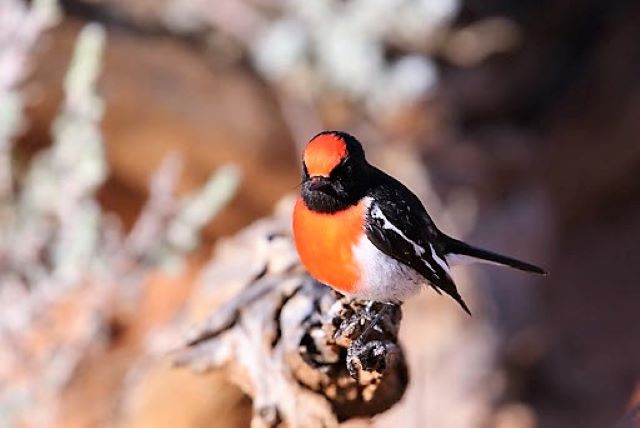I spent a Saturday morning walking around the farm in Wallington where I conduct a seasonal bird survey.
Usually, this time of year there are flame robins on the farm, as they are altitudinal migrants that fly to coastal areas in the winter, but I disappointingly did not see or hear one of these beautiful birds.
I saw a black swan sitting on a nest (these birds must get so cold nesting in winter) and striated pardalotes, red wattlebirds, black-winged stilts and one brown goshawk.
Probably the most notable birds I have seen in the last few weeks was a flock of around 20 red-necked stints and one curlew sandpiper in Point Henry.
These migratory waders must be over-wintering around Point Henry and did not fly to Siberia and west Alaska to breed.
Usually, these birds arrive in Australia from late August to September and leave from early March to mid-April. Some young birds, such as birds in their first year, may remain in Australia.
I received a lovely email from Lyn in Portarlington. Lyn had some advice for Sue, who was wanting to photograph yellow-tailed black cockatoos on the Bellarine. Lyn explained that she observes and hears these cockatoos every evening as they fly in from a westerly direction, before they roost in gums next to Arcare Aged Care in Portarlington. Great advice. Thanks Lyn, I might go and check them out myself.
Kevin has been enjoying the sunny days. He went to Swan Bay jetty and noticed about 15 royal spoonbills feeding while the tide was very low.
He also went to the boat ramp at Queenscliff and noticed about 20 white ibis feeding close to the observation platform.
Most of them flew off together, possibly because the tide was rising. A little further out, he was surprised to see a hoary-headed grebe.
While Kevin was standing on the observation platform, some superb fairywrens hopped around at close quarters, which made for some lovely photo opportunities.
I received an email from Lee, who has been travelling around South Australia. He visited two of the best birding locations in the state, namely Robe and Birdlife Australia’s bird sanctuary known as Gluepot, which is near Waikerie in the Riverland district.
Over 190 species of birds that have been recorded on Gluepot Reserve. There are five bird hides on the reserve and Lee started his day at the Grasswren tank on track 7, where he observed a rare dlack-eared miner. Soon after this he took some wonderful images of a male red-capped robin.








